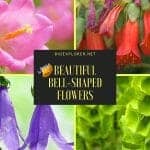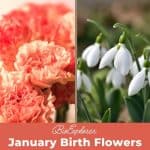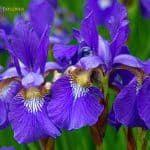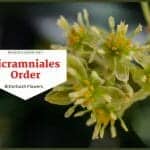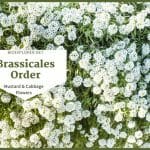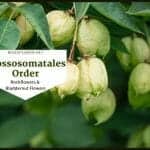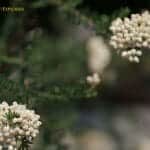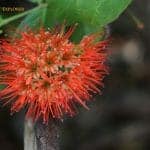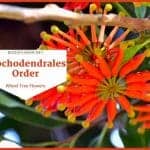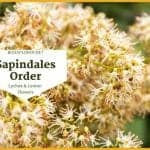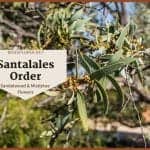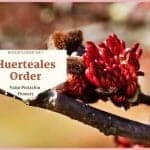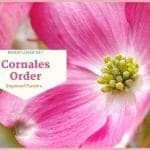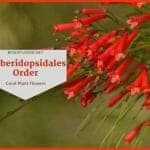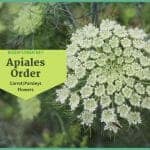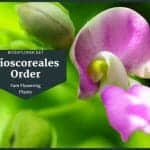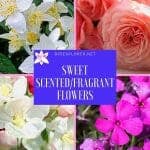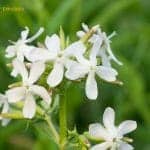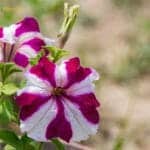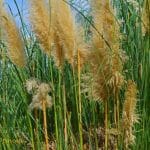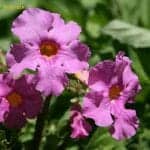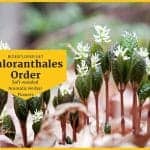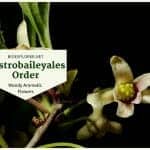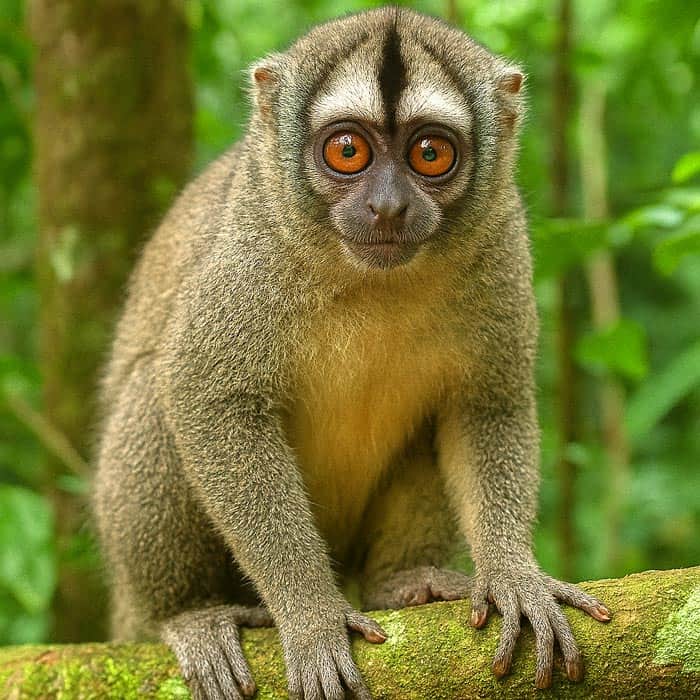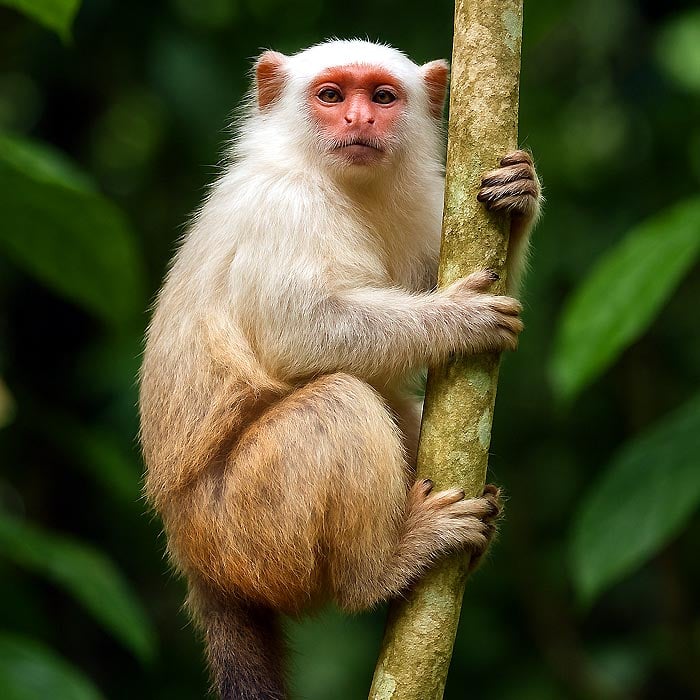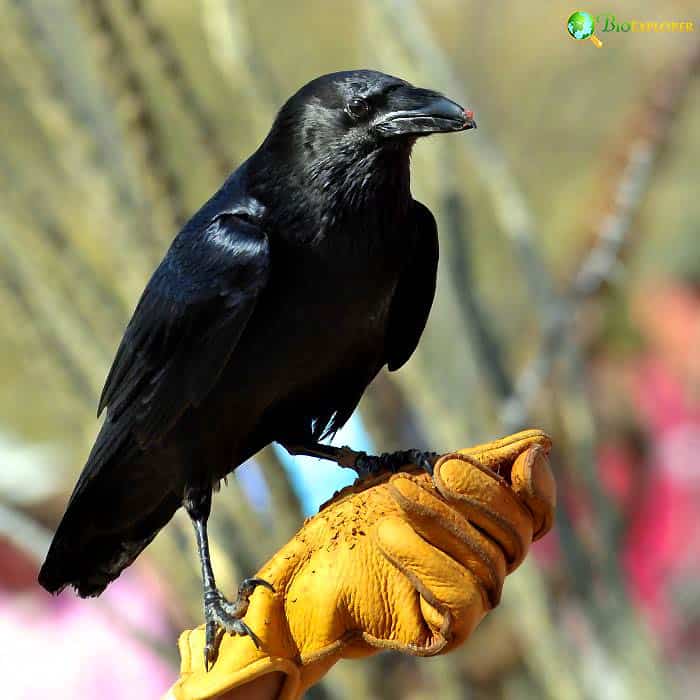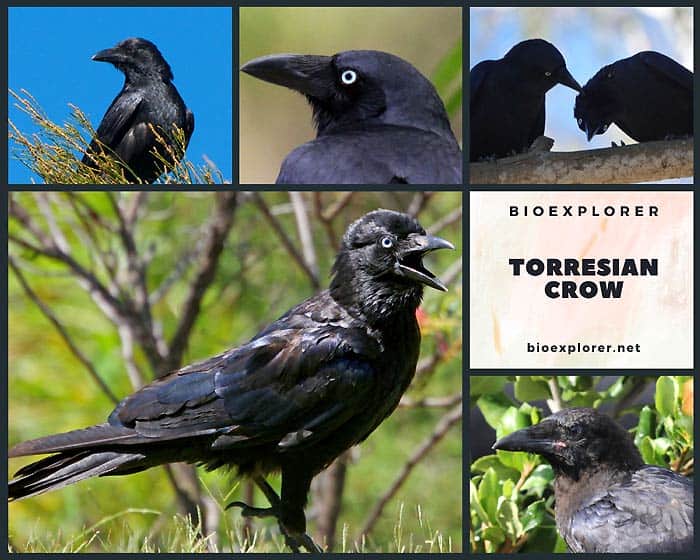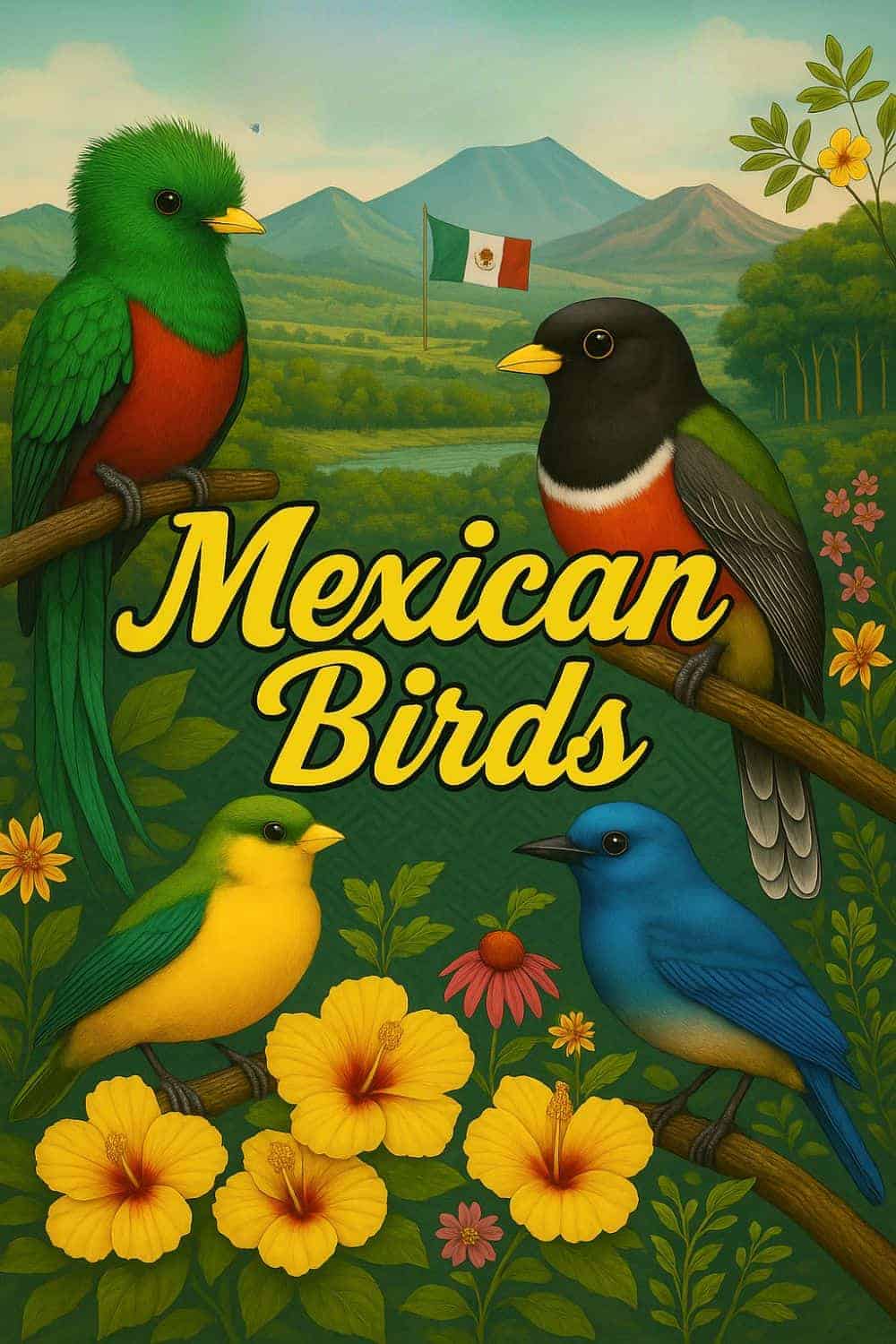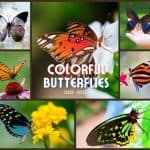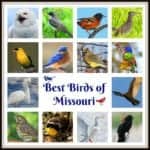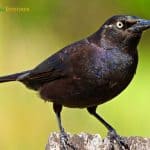the red flower - search results
If you're not happy with the results, please do another search
Bell-Shaped Flowers
The bell-shaped flowers are trendy because they are known for their beauty, colors, and variations. Featuring green, blue, purple, white, pink, and many colors, these bell-resembling flowers are used for many purposes such as decoration, using it in weddings, making wreaths, and lovely gifts.
December Birth Flowers
Are you wondering about the special flower for those born in December? Look no further. This article reveals that December has two birth flowers: Holly and Narcissus (Paperwhite), each with unique symbolism.
Birth Flowers
Explore birth flowers for each month from January to December. Learn their symbolism, meanings, and cultural connections in this comprehensive guide.
January Birth Flowers
Explore January birth flowers, Carnations & Snowdrops. Learn their symbolism, connection with horoscopes, care tips, and cultural significance.
Red-handed Howler
The red-handed howler monkey (Alouatta belzebul) is an endangered species of howler monkey, a New World species. Red-handed howler monkeys are diurnal, although they spend most of the day (up to 80%) sleeping on tree branches with members of their squad.
Guyanan Red Howler Monkey
The Guyanan red howler monkey (Alouatta macconnelli) also known as Guianan Red Howler, is a New World monkey native to Guyana, Suriname, Trinidad, Venezuela, and Brazil. Each troop has a hierarchy consisting of a single dominant alpha male, sometimes with 1 or 2 subadult males. The rests are females and their young.
Red-eared Guenon
The red-eared guenon (Cercopithecus erythrotis), also called the russet-eared guenon or red-eared monkey is endemic to the tropical and subtropical lowland rainforests of Nigeria, Equatorial Guinea, and Cameroon.
Schmidt’s Red-tailed Monkey
The Schmidt's red-tailed monkey, also called the red-tailed guenon, Schmidt's guenon, or black-cheeked white-nosed monkey is a primate species in the Cercopithecidae family. The Schmidt's red-tailed monkey is named for its red coloration on the underside of its tail, as well as the bicolor coloration of its tail as the reddish color increases from the base to the tip.
The Ultimate Guide to 25+ Spectacular Desert Flowers & Their Unique Adaptations
Desert Flowers: Approximately 1/3 of the earth's surface is deserts. Despite having prolonged periods without precipitation, severe temperature ranges, dry winds, and low humidity, the beautiful blooms of the desert have learned to survive the harsh environment and continue to bloom and provide colors to the desert.
Red Howler Monkey
The Colombian red howler or Venezuelan red howler is a South American species of howler monkey, a New World species of monkey found in the western Amazon basin. Colombian red howler monkeys live in relatively large social groups composed of around 10 individuals, with just one or possibly two of the individuals being male.
Red Cranesbill
Geranium sanguineum, commonly known as bloody geranium or Red Cranesbill, is a hardy flowering perennial herb from the Geraniaceae family. Red Cranesbill is native to Asia and Europe. There are around 300 species of flowering plants in the Geranium genus.
Blood-Red Iris
Iris sanguinea is a rhizomatous angiosperm that can grow to a height of 0.5 to 1 meter and a spread of 0.1-0.5 meters. The Iris flower signifies wisdom, hope, trust, and courage. The Iris flower is considered the flower for the 25th wedding anniversary.
Beautiful Japanese Flowers
Japan is a beautiful country with a wide array of beautiful flowers. These Japanese flowers that bloom in different seasons are great attractions to tourists and even locals. Explore the best flowers endemic to Japan.
Order Vitales / Grapes & Boston Ivy Flowers
Members of Vitales have small flowers and simple, pinnate, or palmate leaves. The tendrils and the inflorescences are opposite to the leaves. The grapes, Boston ivy, and Chinese Virginia creeper are the example species of the order Vitales.
Order Oxalidales / Wood Sorrel Flowers
Oxalidales (Wood sorrel) order of flowering plants is annuals, perennial herbs, lianas, shrubs, and trees distributed in temperate and tropical regions. Oxalidales plants have compound leaves, actinomorphic and bisexual flowers, usually 4-5 sepals and petals.
Order Picramniales / Bitterbush Flowers
The Bitterbush order, Picramniales, are trees and shrubs with a neotropical distribution. Members of this order have bitter bark, alternate and compound leaves, alternate or sub-opposite leaflets, unisexual flowers, and non-arillate and non-endospermic seeds.
Brassicales / Mustard & Cabbage Flowers
Brassicales is an order of flowering plants comprising trees, herbs, shrubs, or lianas primarily distributed worldwide. Brassicales have glucosinolates or mustard oils, small stipules, often bisexual flowers, inflorescences in racemose, and nectaries found between the petals and the stamens. The known plants of Brassicales are mustard, cabbage, capers, mignonette, and nasturtiums.
Order Crossosomatales / Rockflowers
Crossosomatales is a small order of flowering plants consisting of woody shrubs and trees. It is distributed in various regions across the northern and southern hemispheres. Crossosomatales or the Rockflower order is placed under Rosid eudicots and consists of 7 families and 12 genera.
Rice flower
The Rice flower (Ozothamnus diosmifolius) is an upright, woody shrub in the Asteraceae (daisy) family native to Eastern Australia. The Ozothamnus genus includes approximately 53 species of flowering plants. This species is known for sago bush, pill flower, and white dogwood.
Tassel flower
The Tassel flower is a small, intriguing plant on the front edge, producing tiny scarlet-orange pompoms that appear to float in mid-air when viewed from a distance. Also known as Cupid's shaving brush or Emilia, the tassel flower is a genus of over 100 species in the Asteraceae family found primarily in the tropics of the Old World.
Red Rover
The Red Rover Mum is a beautiful large-flowered mum flower that dramatically affects any flower arrangement. Fresh, bold, and classy are the words used to describe this distinctive flower. Colors range from red to yellow, brown to pink, and the flowering period runs from mid-summer to fall.
Order Trochodendrales / Wheel Tree Flowers
Trochodendrales, under Division Magnoliophyta, is a small order of flowers with members distributed in Southeast Asia. The Trochodendrales trees are primitive with simple leaves, no vessels, small or no stipules, and reduced perianth. The Trochodendrales flowers are bisexual and pollinated via wind (Tetracentron) or insects (Trochodendron). The wheel tree flowers belong to the order Trochodendrales.
Order Petrosaviales / Petrosavia Flowers
Petrosaviales is a very small order grouped within the lilioid monocots, are found in eastern and southeastern Asia. Plants of Petrosaviales have no laticifers and vessels in the axial system and possess simple, small, reduced (or absent) leaves. Japolinorion osense and Petrosavia sakuraii are example flowers of the Petrosaviales order.
Order Gunnerales / Rhubarb & Resurrection Flowers
Gunnerales order includes flowers with ellagic acids, abundant plastids in their phloem cells, hydathodal teeth in the lamina margins of the leaf, and small flowers. The Gunnerales plants are dioecious and generally pollinated via wind. The giant rhubarb and the resurrection plants are found under the Gunnerales order.
Order Dilleniales / Guinea Flowers
Dilleniales is a dicotyledonous flowers have a pantropical distribution that extends to all of Australia. The flowers of Dilleniales are often showy and bisexual. Among the species of Dilleniales are the guinea flower and the stone leaf plant. The species of Dilleniales have simple and alternate leaves, rarely present stipules, 5-merous petals and sepals, and numerous stamens united into bundles.
Order Buxales / Boxwood Flowers
The whole range of boxwood flowers belong to order Buxales. Order Buxales is the eudicot flowering plant consisting of evergreen shrubs or trees. Members of Buxales are usually monoecious with simple, non-sheathing, and estipulate leaves. Balearic box, Korean boxwood, Japanese Pachysandra, and Allegheny spurge are excellent garden flowers from this order.
Order Sapindales / Lychee and Lemon Flowers
Order Sapindales belongs to the dicotyledonous flowering species which are distributed in the tropics and the temperate regions. Most plants of Sapindales are woody with resin ducts in their bark or wood, compound or lobed leaves, and polypetalous flowers. They are polygamous, with most bisexual flowers functionally unisexual. Among the critical species involve cashew, mahogany, lemon, and lychee.
Order Santalales / Sandalwood & Mistletoe Flowers
Santalales is one of the most prominent groups of parasitic flowering plants, with species distributed worldwide. Santalales involve plants that form haustorium to penetrate the host's barks and roots, plants that undergo photosynthesizing activities in the stem, and members with usually simple and exstipulate leaves. Sandalwood and mistletoes are just two of the known plants under Santalales.
Order Paracryphiales / Possumwood & Tawheowheo Flowers
This Possumwood order plants have scaly vegetative buds, simple, alternate, and leathery leaves, and 4-5 sepals and petals. The Paracryphiales plants are hermaphrodite or andromonoecious. Known examples are the grey possumwood and tawheowheo.
Order Huerteales / False Pistachio & Olomea Flowers
Huerteales is an unusual order of flowers belonging to the rosids, a large eudicot group. The small trees and shrubs are primarily found in tropical or warm temperate regions. Plants in Huerteales usually possess alternate leaves, small and actinomorphic flowers, and 5-merous floral parts. Most Huerteales flowers are bisexual, and all possess nectaries to promote pollination. All species of Huerteales are woody, like the Olomea, brown-ironwood and False pistachio.
Order Cornales / Dogwood Flowers
The dogwood order of flowers, Cornales, is basal among asterids. Cornales is relatively small, but members are morphologically diverse and are cosmopolitan in distribution. Cornales plants are mostly woody with simple or compound leaves, small flowers, floral parts in multiples of four, and generally bisexual. Many of the species of Cornales, like the flowering dogwood and Lindley’s blazing star are of ornamental value.
Order Berberidopsidales / Coral Plant Flowers
Berberidopsidales is a small order of flowering species under the clade of the core eudicots. The species of Berberidopsidales possess crystals, usually have 5-merous floral parts and usually small flowers. Coral plant and Olivilla flowers are among the only 4 species of Berberidopsidales.
Order Aquifoliales / Holly & Brazillian Tea Flowers
Aquifoliales is the holly order of flowering plants, including the common holly and Brazillian tea plants. They are primarily distributed worldwide with usually evergreen trees and shrubs. The Aquifoliales leaves are typically alternate, exstipulate, and lack leaf sheath. American holly, Churnwood, and Japanese helwingia are Aquifoliales flowers.
Order Apiales / Carrots and Parsleys Flowers
Apiales are an order of flowering plants belonging to Class Magnoliopsida. The species of order Apiales are distributed worldwide and involve important and common plants like carrot, parsley, and ginseng.
Order Dioscoreales / Yams Flowering Plants
Order Dioscoreales is a family of flowering plants which most commonly include herbaceous plants. The famous yam Plant order consists of 21 genera and 900 species worldwide. The most important plants of this plant order have a massive number of medicinal and food properties. Yams, Bluethread, and Colic Roots are examples of flowering plants in this order.
Top 100 BEST Fragrant Flowers
Most fragrant flowers release their scents via Methyl benzoate and Benzaldehyde. These chemical aromatic volatile compounds give off a sweet odor. Explore the top 100 best-scented flower collections here.
Night-flowering Catchfly
Night-flowering Catchfly (Silene noctiflora) is a species of plant in the Caryophyllaceae family, known by the common names clammy cockle and night flowering silene. With almost 900 species, it's the largest genus in the Caryophyllaceae family. The corolla is white, sometimes with pinkish tones, and has five narrow, spreading claw-shaped lobes that are deeply serrated with rounded and slightly serrated ends.
Gilliflower
Mahon's Gilliflower has a beautiful appearance and an alluring scent that will turn heads. Indeed, this flower is sometimes used in bridal bouquets, decorations, and gifts. Today, this beautiful flower has around 140 species. It comes in various shades, including white, blue, purple, red, and pink.
Order Acorales / Sweet Flag Flowers
Acorales commonly called the sweet flag order of flowering plants is considered the most basal lineage of monocotyledons (monocots). There is only one family in this order called Acoraceae and one genus, Acorus divided into two to four plant species that resemble irises.
Order Piperales / Paleoherb Spicy Fragrant Flowers
The Piperales are paleoherbs, which are plants that are similar or closely related to the monocots. Piperales order is divided into 3 families. Piper nigrums, birthworts, Lizard-tail, and Aristolochia are some of the good species in Piperales.
Honeyflower
Honeyflower (Melianthus major) is a strikingly large subshrub in the Melianthaceae family. Its leaves are alternately arranged and are made up of several leaflets with strongly serrated edges. Its flowers have a claw-like appearance with 4 dark brown to rust-red petals of various sizes.
Flowering Reed
Reed (Phragmites australis) is a cosmopolitan herb found on every continent except Antarctica and is considered the most common angiosperm. The inflorescence is a pinnate and drooping panicle 15 to 50 cm long, often yellowish-brown to purple in color.
Flowering Fern
The term flowering fern refers to the hardy gloxinia fern (Incarvillea delavayi), which is actually not a fern, but earned the nickname because of its fern-like, deeply divided leaves. In contrast to real ferns, flowering ferns glow with trumpet-shaped, pink flowers from the beginning of spring to late summer.
Order Chloranthales / Soft-wooded Herbal Flowers
Order Chloranthales belongs to core angiosperms which have soft-wooded aromatic shrubs and trees with swollen nodes and leaves with opposite saw-toothed. Many species of Chloranthales are used as herbal medicines. Sarcandra glabra, Sarcandra chloranthoides, Hedyosmum mexicanum, Hedyosmum brasiliensis, Chloranthus officinalis, Chloranthus japonicus, and Chloranthus monander are some of the examples in this flowering order.
Order Austrobaileyales / Woody Aromatic Flowers
Austrobaileyales order is composed of woody aromatic flowers in three different families. Example flowering plants include Wu Wei Zi, Magnolia vine, Star anise, Bay starvine, Kadsura vine, Bitter vine, and more.
Elderflower
The Elderflower (also known as an elderberry tree and an elderflower tree) is a slightly arid and messy tree that rarely has a central trunk. Instead, numerous trunks tend to stick out of the ground and branch out regularly, giving it a shrub-like, bushy appearance. Each tiny flower is cream/white colored in full bloom and has five rounded petals, cream/white colored stalks, and yellow anthers.
25 Most Known Exotic Flowers
Exotic plants, when introduced to a foreign place, have the tendency to overgrow and dominate. Listed are the 25 most known exotic flowering plant species.
Southern Patas Monkey
The Southern Patas Monkey (Erythrocebus baumstarki), native to Tanzania, is a critically endangered primate known for its speed, elusive nature, and striking coloration. Once widespread, its population now teeters between 100–200 individuals due to habitat loss and human threats. Inhabiting open acacia woodlands, these ground-dwelling monkeys play a vital ecological role in seed dispersal and insect control. Conservation efforts are urgently needed to protect this rare species and restore its shrinking habitat range.
Gray-handed Night Monkey
The gray-handed night monkey (Aotus griseimembra) is a small, nocturnal primate native to Colombia, Venezuela, and Panama. Known for its large owl-like eyes and gray limbs, this tree-dwelling monkey thrives in rainforest canopies and plays a vital role as a seed disperser. Monogamous and family-oriented, it relies on both parents—especially the father—for infant care. Though adaptable, habitat loss, hunting, and the pet trade threaten its survival, earning it a Vulnerable status on the IUCN Red List. Conservation efforts are crucial to preserve this unique night-dweller and its forest ecosystem.
Schneider’s Marmoset
Schneider’s marmoset (Mico schneideri) is a tiny Amazonian monkey discovered only in 2021. Endemic to Brazil’s Mato Grosso forests, it lives in one of the most threatened rainforest regions. With a diet of fruits, insects, and flowers, it plays key ecological roles. Social and territorial, this marmoset breeds within tight-knit groups. Unfortunately, rampant deforestation threatens its survival. Urgent conservation is needed to protect this rare species and the rapidly vanishing habitat it calls home.
Chihuahuan Raven
The Chihuahuan raven (Corvus cryptoleucus) is an intelligent desert-dwelling bird found in the southwestern U.S. and Mexico. Slightly smaller than the common raven, it features all-black plumage and hidden white neck feathers. Adapted to arid grasslands and scrub, it thrives as both a predator and scavenger. Known for its deep "kraaa" call and playful flight displays, this raven plays a vital ecological role and demonstrates impressive social behavior and adaptability in harsh environments.
Torresian Crow
The Torresian crow (Corvus orru) is a smart, adaptable bird native to northern and western Australia, as well as nearby regions in Papua New Guinea and Indonesia. Known for its glossy black feathers and white eyes, it thrives in rainforests, farmlands, and cities. An opportunistic omnivore, it feeds on everything from insects to carrion. Remarkably, it has learned to eat toxic cane toads safely—a skill passed down culturally within crow populations.
Top 15 Mexican Birds (Spectacular Species You Must Know)
Discover the top 15 Mexican birds, from vibrant quetzals to rare doves. Learn where to find Mexico’s most colorful and unique bird species across forests, coasts, and mountains.
Top 25 Most Colorful Butterflies That Will Take Your Breath Away!
Colorful Butterflies: These incredible insects come in a myriad of colors, patterns, and sizes, each one more stunning than the last. Explore 25 of the most spectacular and colorful butterfly species from around the globe.
What Do Monkeys Eat?
Monkeys are divided into two groups; the Old World and New World monkeys. Explore what do monkeys eat, monkeys diet by types and what eats monkeys here.
What Do Chinchillas Eat?
Chinchillas are attractive little rodents famed for the fluffy appearance that sets them apart from other animals. What do Chinchillas eat, diet patterns & more.
Top 15 BEST Birds of Missouri
Here are the top 15 birds of Missouri and their fascinating fun facts along with where can one spot each of them in the State of Missouri.
Top 26 BEST Animals With Best Eyesight
The eyes with various marvelous features have evolved in all kinds of animals. Explore top 26 different animals with best eyesight in animal kingdom.
What Do Groundhogs Eat?
Groundhogs are herbivores that eat a diverse diet of greens, vegetables, fruits and more. Learn everything groundhogs eat and their favorite foods.
Common Grackle
The Common Grackle is a large, long-tailed blackbird with striking iridescent plumage-males shimmer with purple, green, or blue gloss, while females are duller and browner. Found across eastern North America, grackles thrive in a wide range of habitats, from wetlands and fields to suburbs and city parks. Highly social, they often gather in massive flocks outside the breeding season. Their varied diet includes insects, seeds, grains, and even small animals. Grackles are known for their harsh, rusty-gate calls, and their communal roosts can number in the millions.


